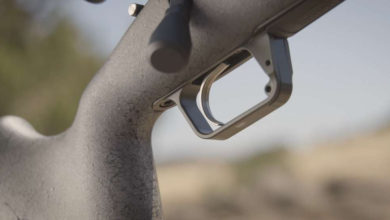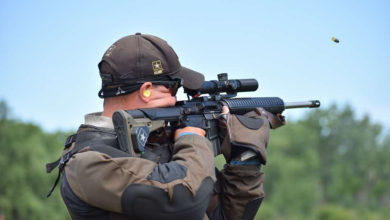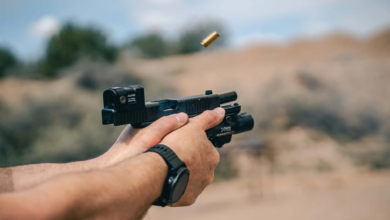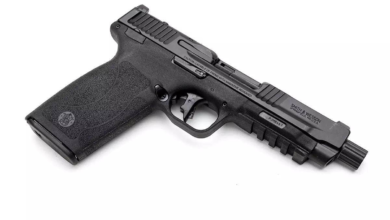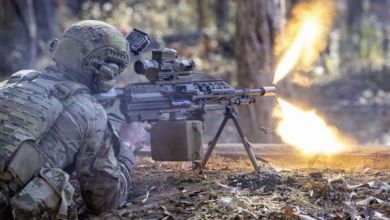Colt And Smith & Wesson M1917 Revolvers: A Big Deal For A Reason
Colt’s version of the M1917 was basically an updated version – to accommodate the .45 ACP cartridge, that is – of their already-extant (since 1899) New Service revolver.
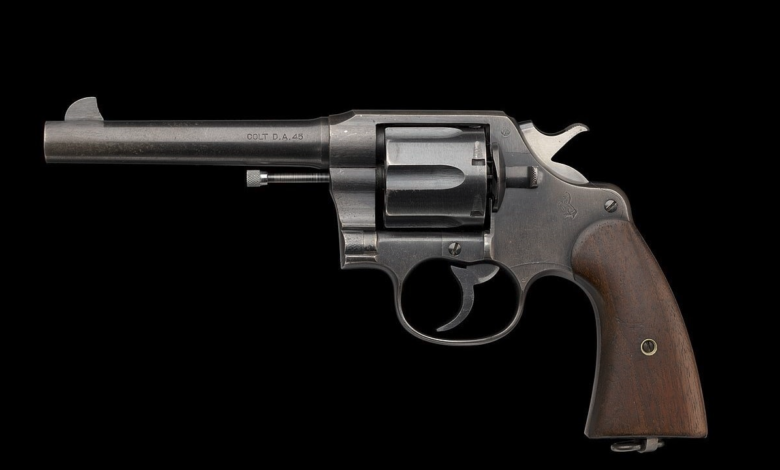
It is well known to gun enthusiasts and even military buffs who aren’t gun experts that the legendary Colt M1911 .45 ACP semiautomatic pistol first established its reputation for ruggedness, reliability, and stopping power in the muddy trenches of Europe during the First World War – particularly the engagement in which Sgt. Alvin York earned his Medal of Honor.
What is not as well-known to those who aren’t hardcore handgun history buffs is that when the U.S. first entered into WWI, there wasn’t a sufficient existing stock of M1911s to fill the holsters of American doughboys heading “Over There.” This is where the Smith & Wesson Model 1917 and Colt M1917 .45 ACP double-action (DA) revolvers came in as a stopgap measure.
Smith & Wesson M1917 Specifications
As Tom Osborne wrote in Smith & Wessons of the Great War (from Gun Digest 2011), “Smith & Wesson’s Model 1917 revolver can perhaps best be described as an expedient that actually worked. Procuring revolvers to supplement the semiauto pistols seemed a reasonable solution to the handgun deficit.”
There was a slight problem, however. Traditional revolver cartridges like .38 Special, .44 Special, and .45 Long Colt are rimmed, whilst autopistol cartridges are so-called “rimless” cartridges, which do in fact have rims, but the rims are the same diameter as the main body of the cartridge cases, which means that they won’t catch on the cylinder of a wheelgun and therefore stay in place for the primers to be struck by the firing pin, or to be properly extracted and ejected after firing – or to be safely cleared whilst still unfired for that matter.
S&W’s ingenious solution was to come up with so-called “half-moon clips” that held three cartridges, each properly positioned in the cylinder.
Specifications included a 5.5-inch barrel, overall length of 10.8 inches, and a weight of 2.25 pounds. They had a case-hardened hammer, a commercial-grade blue finish, smooth walnut grips, and a lanyard ring on the butt. the gun was stamped “United States Property” beneath the barrel in front of the ejector rod and “US/Army/Model/1917” on the base of the butt. Smith & Wesson produced a total of 153,300 of these wheelies. By modern standards, they would be considered part of Smith’s N-frame series, along with their Model 29 .44 Magnum, Model 27 .357 Magnum, and Model 57 .41 Magnum.
Colt M1917 Specifications
Colt’s version of the M1917 was basically an updated version – to accommodate the .45 ACP cartridge, that is – of their already-extant (since 1899) New Service revolver. The WWI military version was updated with a 5.5-inch barrel, a dull blue finish in place of the shiny commercial blue, and smooth walnut grips to replace the checkered hard rubber grips. The GI guns were stamped “U.S. Army Model 1917” on the butt and “United States Property” under the barrel along with an inspector’s mark at the top left rear of the frame. Overall length was 10.8 inches, with a weight of 2.5 pounds (a quarter-pound heavier than the Smith).
Colt furnished more than 150,000 to the U.S. Government in 14 months between October 1917 and December 1918, which amounts to 40 percent of the 355K total production run of New Service revolvers between 1899 and 1944.

